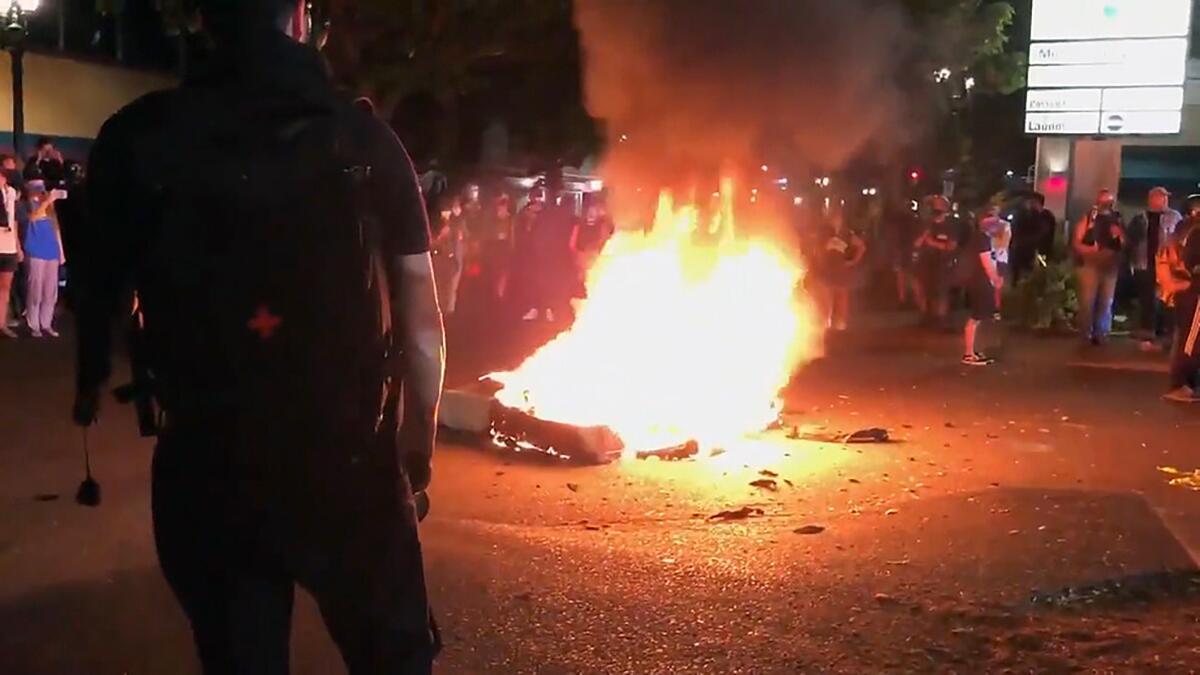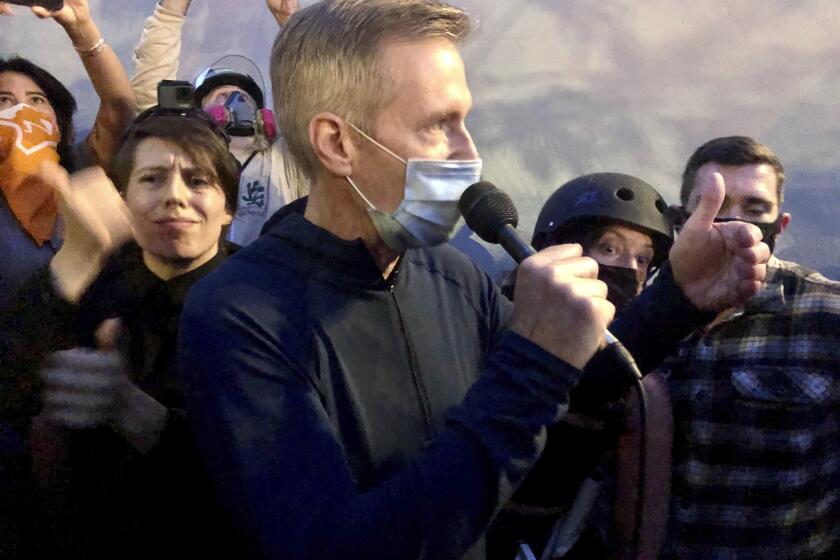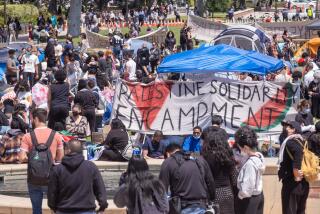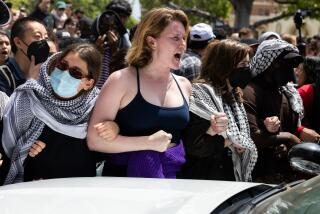Op-Ed: I was an activist in the ’60s. Here’s my advice to Portland’s protesters

- Share via
This year’s racial justice protests have captured the attention of the entire country — and especially that of ’60s veterans like me. Perhaps none more so than the ongoing battle in Portland, Ore., where nightly clashes have continued for more than 100 consecutive days.
I am a 74-year-old, Stage 4 cancer patient sheltering in place and prevented from protesting by the demands of my age and illness and the risks posed by the coronavirus. But I have been watching Portland from afar, and for the purposes of this missive, I have been there before.
I registered Black voters in Jim Crow Mississippi in 1964. I was elected Stanford University’s “radical” student body president in 1966 on a platform of equal rights for male and female students. I was a national leader in the student movement to stop the Vietnam War, and I helped found and organize a campaign of civil disobedience against that war’s system of military conscription. For this, I was incarcerated in the federal prison system from 1969 to 1971. All told, I devoted the first 10 years of my adulthood to the ongoing quest for social justice, at great personal risk and no small sacrifice.
That was, I admit, a long time ago, and “What have you done lately?” would be an understandable retort. But please bear with an old man. Hazy as this ancestral perspective may be to many young activists, your predecessors have some observations that may be of use to you now.
The first job of government authorities is to protect the public from harm, even — or especially — when they are asserting their rights of expression.
Demonstrations are choreographed statements. The point is to change people’s minds.
The goal of demonstrating is to reach people who otherwise would not take up the cause of racial justice. The message is most effective when it is accessible, compelling fellow citizens to rethink hidebound attitudes and prejudices. Threatening people and shouting them down will only sabotage this dynamic — as will burning buildings, wearing body armor, throwing projectiles, breaking windows and picking fights. If it is to have any chance of advancing, the quest for racial justice needs to jettison threatening tactics. Frightening people is always counterproductive, even if it is sometimes emotionally satisfying. The objective should be to convert everyone with whom you have contact, whoever they may be, police included.
Beware the unintended consequence.
In 1968, battered by government harassment, assassinations and military escalation, significant portions of our movement for social justice were unable to dial back their threatening posture. As a result, we became unwitting foils for the election campaign of Richard Nixon, providing sufficient political ammunition for Nixon to capture the White House. Five decades later, there is a clear and present danger that the movement will provide the same kind of assist to President Trump. Pay attention. There is no need to make the same mistake again.
The goal is to transform Portland’s practice of policing and treatment of Black people, not to hold the city hostage.
Thanks to the courage and commitment of thousands of Portlanders, the issue of racial justice has been identified and framed in the city. Now it is time for official Portland to deliver on its citizens’ demands, and for the movement to join in the civic process and leverage change out of the powers that be. Unfortunately, that process will never take up Black Lives Mattering as long as the city is hamstrung by nightly battles. From where I sit, holed up and safe in California, Portland seems to have worked itself into a corner, in which productive outcomes are stymied by the ritualistic repetition of conflict for conflict’s sake. It’s time for the movement to declare victory, switch focus and direct its energy to the next stage of the struggle.
Righteous anger is not necessarily an agent for change.
The feeling is warranted, of course. The knee on George Floyd’s neck is an outrage to anyone who claims to be human, and fury is an altogether appropriate response. Acting on that righteous anger, however, is a mixed bag. The problem with being both angry and right is that the combination can act as a blank check, blinding us to our behavior and preventing us from upholding the values behind our outrage. Convinced we are right, we exempt ourselves from the possibility of being wrong and give ourselves permission to do anything we feel like — even, perhaps, put our knee on someone’s neck. At that point, we have become the thing we abhor.
Keep an eye on the big picture.
Our country is in an extraordinary moment, and the movement for racial justice is attempting to do something equally extraordinary: confront America with its worst self in a way that allows America to find its better self. Thanks to the success of Black Lives Matter, our cause may be extended further than at any time since the fall of Jim Crow. The stakes are enormous, and all of our actions must reflect that.
David Harris has been a journalist for 50 years and is the author of 11 books, including the forthcoming “My Country ’Tis of Thee.”
More to Read
A cure for the common opinion
Get thought-provoking perspectives with our weekly newsletter.
You may occasionally receive promotional content from the Los Angeles Times.











